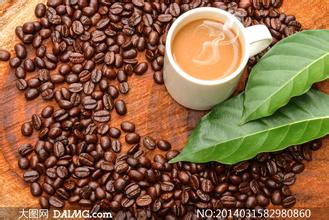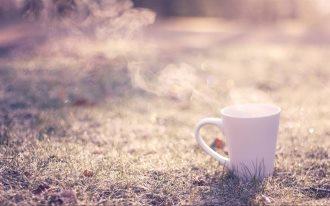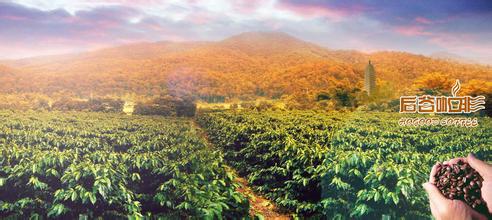Step diagram of Japanese hand-made coffee-how to use French coffee maker
Step diagram of Japanese hand-made coffee-how to use French coffee maker
Japanese hand-brewed coffee extraction also has strict requirements on timing. Generally speaking, the extraction time of one cup is about 1 minute 30 seconds, two cups are about 2 minutes to 2 minutes 30 seconds, and 3 cups are about 3 minutes, not more than 3 minutes 30 seconds. Without this time limit, if the extraction time is too short, it is easy to cause insufficient extraction, the taste is insipid, and if it is too long, it is easy to extract too much, and the coffee has more bitter and miscellaneous flavor components.
The grinding degree of coffee powder determines the contact area between coffee powder and water during brewing and the degree of easy extraction. The finer the coffee powder is ground, the easier it is to extract its ingredients and the stronger the flavor, but after grinding, it is easy to extract too many bitter ingredients and lose their original acidity. On the contrary, the rougher the grinding degree, the lighter and softer the coffee taste, and the appropriate roughness can well show the acidity of the coffee.
1. Warm the cup. Everyone knows that the tannins in the coffee do not work as expected, making the coffee very sour, so we should pour hot water into the coffee cup before we start brewing the coffee.
two。 Grind beans. The thickness of hand-made coffee should also be adjusted according to the characteristics of coffee beans, and the powder thickness of deep-roasted coffee beans should be slightly thicker than that of medium-deep roasted beans. Specifically, the deep-roasted beans of carbon-roasted coffee are 4, while those of medium-and deep-roasted beans like Blue Mountain should be 3. 5. If the bean powder is too thick, the coffee is not strong enough, if it is too fine, the coffee will be very bitter. There is also the problem of the quantity of coffee beans. The amount of beans in a cup of coffee is 12-14g, while the quantity of 2 cups should be calculated by formula-2) X2, three or more cups is simple, 3 times 30g, 4 cups 40g, and so on.
3. Assemble utensils. Hand-brewed coffee is mainly composed of three parts, filter paper, filter cup and filter pot. If you pay attention to it, there should be an incubator under the filter pot to prevent the coffee from getting cold during brewing. The size specifications of filter paper, filter cup and filter pot should match. For example, two-person filter paper should be matched with two-person filter cup.
4. Transfer bean powder. Pour the ground bean powder into the combined filter paper, then gently pat the filter cup to pat the soybean powder and smooth the surface. So that the powder can receive water evenly in the following steps.
5. Warm the pot. Pour a small amount of hot water into the bottom pot, shake a few times, and then pour out. Then put the solid bean powder on the bottom pot.
6. It is stifling and steaming. The purpose of steaming is to stuffy the aroma of coffee and prepare for the second brewing. The steaming water temperature should be 93 degrees. Pour water from the center of the bean powder and circle it for 2-3 times, so that all the soybean powder can absorb water evenly. It is best to drop 3-5 drops of water. After absorbing water, soybean powder will expand, from the previous flat to the upward protruding arc. At this time, you can smell the faint fragrance of coffee powder. This step is particularly important and is one of the decisive factors in determining the success of a cup of coffee.
7. Brew. After steaming, put the kettle on a moist cloth to cool down. 25-30 seconds later, the water temperature drops to 89-91 degrees, and you can brew. Generally speaking, the brewing temperature of moderately roasted coffee beans (we call inert beans) is 91 degrees, which can better extract the aroma of coffee beans, while the brewing temperature of deep-roasted coffee beans (lively beans) is 89 degrees Celsius. This water temperature is enough to extract the aroma and bitterness of coffee beans. If the water temperature is too low, the water temperature is a little light, and the water temperature is too high. The brewing water can be a little thicker than the steaming one, but it must also be stable. The amount of coffee can be controlled by the number of laps and the speed of the current. Whether it is brewing one or three cups of coffee, the water simply needs to inject water in a circle from the center, then back to the center from the outer circle, to the center of the circle to collect water, and the brewing is over. In the brewing process, be sure not to wash the water into the filter paper, otherwise the coffee will be very astringent. Generally speaking, the amount of coffee brewed should be 0.5 more than the mark of the pot, otherwise the amount of coffee will not be enough.

Important Notice :
前街咖啡 FrontStreet Coffee has moved to new addredd:
FrontStreet Coffee Address: 315,Donghua East Road,GuangZhou
Tel:020 38364473
- Prev

Grinding degree of hand punch and siphon kettle-grinding master's manual
Grind degree of hand flushing and siphon pot-when making siphon coffee in the master's manual, using a hand grinder is more emotional and can meet the demand. Adjust the fineness before use, and control the fineness of the coffee by adjusting the gap between the rotor and the powder. If the beans fall too fast, or if they remain unchanged for a long time, they all need to be adjusted. After boiling water, start grinding
- Next

The effect of air temperature in coffee roaster-how to drink coffee powder
The function of air temperature in coffee roaster-how to drink coffee powder in the inner pot is the most tangled place when making a product. In the original design, because stainless steel can be coiled and welded, it is convenient to manufacture, while cast iron has a great initial investment. Therefore, stainless steel has become a very tempting choice, but after testing, it is found that the stainless steel inner pot can not evenly transfer heat to the whole.
Related
- Beginners will see the "Coffee pull flower" guide!
- What is the difference between ice blog purified milk and ordinary milk coffee?
- Why is the Philippines the largest producer of crops in Liberia?
- For coffee extraction, should the fine powder be retained?
- How does extracted espresso fill pressed powder? How much strength does it take to press the powder?
- How to make jasmine cold extract coffee? Is the jasmine + latte good?
- Will this little toy really make the coffee taste better? How does Lily Drip affect coffee extraction?
- Will the action of slapping the filter cup also affect coffee extraction?
- What's the difference between powder-to-water ratio and powder-to-liquid ratio?
- What is the Ethiopian local species? What does it have to do with Heirloom native species?

